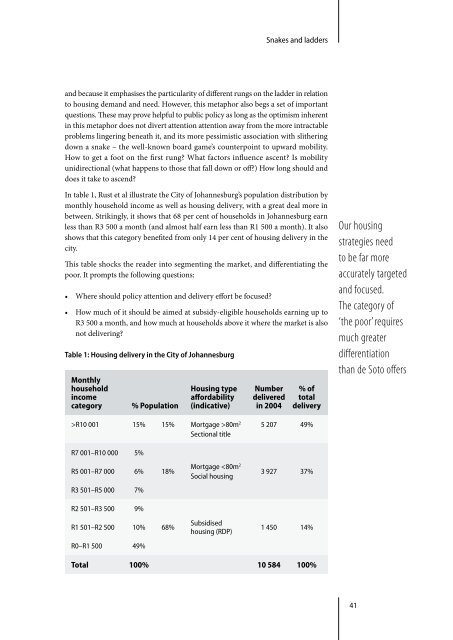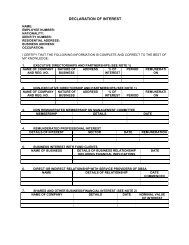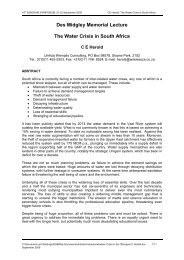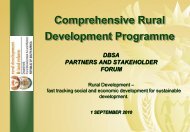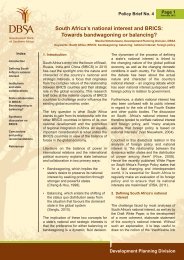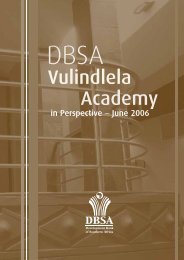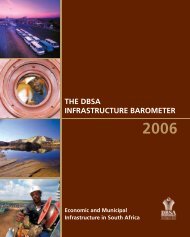Are Hernando de Soto's views appropriate to South Africa?
Are Hernando de Soto's views appropriate to South Africa?
Are Hernando de Soto's views appropriate to South Africa?
You also want an ePaper? Increase the reach of your titles
YUMPU automatically turns print PDFs into web optimized ePapers that Google loves.
Snakes and lad<strong>de</strong>rs<br />
and because it emphasises the particularity of different rungs on the lad<strong>de</strong>r in relation<br />
<strong>to</strong> housing <strong>de</strong>mand and need. However, this metaphor also begs a set of important<br />
questions. These may prove helpful <strong>to</strong> public policy as long as the optimism inherent<br />
in this metaphor does not divert attention attention away from the more intractable<br />
problems lingering beneath it, and its more pessimistic association with slithering<br />
down a snake – the well-known board game’s counterpoint <strong>to</strong> upward mobility.<br />
How <strong>to</strong> get a foot on the first rung? What fac<strong>to</strong>rs influence ascent? Is mobility<br />
unidirectional (what happens <strong>to</strong> those that fall down or off?) How long should and<br />
does it take <strong>to</strong> ascend?<br />
In table 1, Rust et al illustrate the City of Johannesburg’s population distribution by<br />
monthly household income as well as housing <strong>de</strong>livery, with a great <strong>de</strong>al more in<br />
between. Strikingly, it shows that 68 per cent of households in Johannesburg earn<br />
less than R3 500 a month (and almost half earn less than R1 500 a month). It also<br />
shows that this category benefited from only 14 per cent of housing <strong>de</strong>livery in the<br />
city.<br />
This table shocks the rea<strong>de</strong>r in<strong>to</strong> segmenting the market, and differentiating the<br />
poor. It prompts the following questions:<br />
• Where should policy attention and <strong>de</strong>livery effort be focused?<br />
• How much of it should be aimed at subsidy-eligible households earning up <strong>to</strong><br />
R3 500 a month, and how much at households above it where the market is also<br />
not <strong>de</strong>livering?<br />
Table 1: Housing <strong>de</strong>livery in the City of Johannesburg<br />
Monthly<br />
household<br />
income<br />
category<br />
% Population<br />
Housing type<br />
affordability<br />
(indicative)<br />
Number<br />
<strong>de</strong>livered<br />
in 2004<br />
% of<br />
<strong>to</strong>tal<br />
<strong>de</strong>livery<br />
Our housing<br />
strategies need<br />
<strong>to</strong> be far more<br />
accurately targeted<br />
and focused.<br />
The category of<br />
‘the poor’ requires<br />
much greater<br />
differentiation<br />
than <strong>de</strong> So<strong>to</strong> offers<br />
>R10 001 15% 15% Mortgage >80m 2<br />
Sectional title<br />
5 207 49%<br />
R7 001–R10 000 5%<br />
R5 001–R7 000 6%<br />
18%<br />
Mortgage


